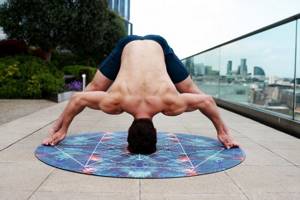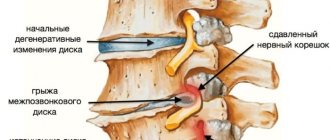Home » Articles » Stretching classes: how much, how and when?
A unique pole dance school in Moscow, Studio 1366, offers effective stretching classes and is happy to share useful tips. Where to start stretching? How often should they be performed and how to avoid injury?
Good stretching is a huge plus when doing any dancing or sports. Making progress in stretching, mastering pole dance or strip dance (you will also find these areas in our studio) will be easy and pleasant for you.
Why do you need stretching?
Remember the cats. Do you know why they often stretch? This is how these animals maintain grace and excellent physical shape, so that they can catch a mouse or chase a feather. 
There are at least 5 concrete reasons why people need to stretch:
- To train more effectively. Muscle stretching affects the range of motion during exercise: the greater it is, the more effective the training.
- To recover faster. Stretching improves blood supply to muscle tissue, preventing microtrauma, which means that recovery after training occurs faster.
- To achieve the goal. Stretching is simply a must have for performing special techniques in various sports, such as taekwondo, Thai boxing, and figure skating. And it also promotes beautiful weight loss.
- To increase flexibility and improve posture. A flexible body and elastic muscles are a sign of health and youth.
- To experience Zen. Stretching simultaneously relaxes and tones the muscles, reduces (or even eliminates) pain, bodily tension and psycho-emotional tension.
How to do stretching exercises correctly
- Do not drink before stretching: a full stomach will prevent you from doing the cool-down properly.
- Tune in to relax: if you have the slightest tension, post-workout stretching will not work.
- Watch your breathing: it should be slow and deep.
- Do not make sudden movements under any circumstances: change positions smoothly, holding each phase for 30 seconds
- Pay special attention to stretching exercises for the calf, back and lumbar muscles - they are the main ones at risk for injuries and pain the next day.

Who needs to stretch?
Stretching muscles is useful for everyone, but stretching is especially necessary:
- Pregnant women, to prepare the body for the arrival of the baby and prevent perineal ruptures. But even after childbirth, stretching will help you quickly return to its former shape and strengthen the pelvic floor muscles.
- People suffering from diastasis and age-related deformation of the abdominal muscles.
- Anyone who is forced to remain in a tense position for a long time, sits endlessly in the office or behind the wheel of a car, stands at a conveyor belt, is engaged in heavy physical labor and moves little in life.

- For those who need to recover faster after injury or surgery.
- Losing weight.
- For children, teenagers and older people to form/maintain beautiful posture, flexibility, and mobility.
How to combine stretching with training?
Stretching should be part of any strength or cardio workout. “In every workout, we include dynamic stretching of the major muscle groups during the warm-up and static stretching (5-7 minutes) at the end of the session to reduce the risk of injury, ensure good range of motion during exercise, gain benefits and maintain flexibility levels,” says Tatiana Borzenkova. But there is no need to stretch between exercises with weights: according to experts, this reduces muscle strength and increases the likelihood of injury.
Yoga will make your body incredibly flexible! Do yoga online with Anna Lunegova. Learn more about the course.
Why stretching is necessary for bodybuilders
Because it helps to harmoniously build muscle mass!
The fact is that during physical activity the muscles become shorter and after training they remain compressed for some time. When they rest, the length will be restored. But stretching speeds up this process significantly. Therefore, anyone who ignores stretching after training slows down recovery and growth of results.

In addition, exercising with heavy weights, as it were, strengthens the muscles, making them “wooden” and the body less flexible. Stretching prevents this stiffness. The muscles of an athlete working with heavy weights become accustomed to shortening. But as much as a muscle can stretch, it can also contract. It turns out to be a vicious circle: worse elongation - worse contraction. This leads to stagnation of strength results.
What kind of stretch do we need?
In general, there are several types of stretching: dynamic, static, active, passive, ballistic and God knows what else. But we will not study them all today, because we are only interested in one type - static stretching, when the muscles are stretched to a certain point (the point of maximum stretching) and held in this position for some time. Today I will try to answer as fully as possible the questions of when and how to stretch and whether it is useful to stretch at all.
It is common to see a non-literate male or female athlete doing dynamic stretching after a workout. That is, instead of freezing at the point of tension of the muscle and doing the actual stretching, they tighten the muscle and make some kind of rocking or rough tugging movements. This is extremely wrong, because dynamic stretching with jerking exercises is harmful to the muscles.
Since muscles receive a huge number of microtraumas during training, dynamic stretching simply worsens their condition. As a result, the dynamics of recovery worsen and the muscle takes a long time to heal, therefore it begins to grow later, and not earlier as we need it.
Who should not do stretching and stretching?
There are few contraindications, but it’s better to be safe. Stretching is contraindicated for:
- recent fractures and dislocations. Don't rush to pull your muscles immediately after your cast is removed. The joints and bones are still too fragile, let them get used to it and finally heal;
- serious pathologies of bones (osteoporosis), joints (arthritis), protrusions in the spine;
- diseases of the cardiovascular system, as the risk of blood clots is increased;
- exacerbation of chronic joint diseases.
Now you are convinced that stretching is not only about the splits. This is about improving performance, reducing soreness, getting rid of tension and pain. So strive for health and results.
Muscle stretching: tips and videos
Muscle stretching should be done morning and evening. In the morning - to “wake up” your body and recharge with good mood and energy. In the evening - to relieve accumulated tension in the muscles. But this, especially for an unprepared person, must be done correctly. Namely:
When you wake up, just stretch sweetly. For many this happens naturally. If you don't have this habit yet, start developing it. You will notice that after stretching, a smile imperceptibly appears on your face - everything in a person is interconnected.
Stretching triggers the processes of pleasure in the body, which can be easily observed in domestic animals: after waking up, any cat will definitely stretch its body thoroughly and only then gracefully sit in the “figurine”. Isn’t a woman akin to an elegant “scratcher” who knows her worth?
In the evening, already lying in bed, rest a little: emotionally and physically. This takes 5-10 minutes. And then, again, stretch with pleasure and thank yourself for the day you spent. Whether it went well or poorly is unimportant. But you are in a warm bed, healthy and tomorrow will be a new day! So let’s reach out and send everything... Far away :)
And we’ll do a little stretching in bed.
In addition to the usual daily morning and evening stretches, it is necessary to carry out a short session during the day and, of course, during training in the gym. Everything is clear with training: the program should include a starting warm-up with stretching and a final warm-up with longer stretching of the muscles. The coach monitors this.
But if you don't have a workout during the day, be sure to take a short break to de-stress and stretch. All you need is a quiet place, an empty stomach (before lunch), a small mat and 8 minutes of time. Just turn on the video at the end of the article - it’s just for beginners.
Note: muscle stretching and “rolling” with a special roller allows you to relax the body muscles more effectively. Don’t miss this opportunity, because it’s now easy to buy any porous roller (for example, a foam roller) with the abundance of offers in stores.
Related Posts
How to convince yourself to lose weight
Do you need to lose weight?
We eat at night, we want to lose weight
Click so you don't lose
What happens if you stretch every day: 7 amazing facts
Stretching can be done anywhere, both at home and at work.

Back in school, we were taught that stretching is necessary for the body, so we shouldn’t ignore it. In adult life, there are a lot of factors that can influence our decision not to do stretching: lack of time, energy, or simple laziness. To boost your morale and motivate you to remember to stretch, we've rounded up 7 amazing things your body can do (if you stretch regularly).
Fact #1: Get energized in just a few seconds
If you feel tired by mid-day, then try stretching a little at your desk. Stretch your arms up, stretch your legs, twist from side to side and the result will not take long to arrive. Jennifer Vartan, certified personal trainer, says:
Stretching helps increase blood flow in the body. This, in turn, relieves fatigue and gives a boost of energy.
Think about it, because such exercise will help you become more active faster and, perhaps, replace going to the nearest coffee shop for a latte.
Sports Guide
For quite a long time, stretching exercises were recommended before training in order to reduce the risk of injury.
But in recent years, much evidence has emerged to the contrary. Believe it or not, a number of studies have shown that trained people who stretched before their main workout suffered more injuries compared to those who didn't. There is an explanation for this phenomenon. While stretching on a regular basis has many benefits (including, of course, increased flexibility), the process itself is stressful for the muscles and ligaments. When we stretch a muscle, we create microscopic damage to the soft tissue, which repairs itself and thereby increases its flexibility. However, immediately after stretching exercises, the soft tissues are under stress, making it difficult for the muscles to produce the force required in both weight training and sports.
For example, if you stretch before a run, you may reduce your muscles' ability to produce powerful movements and high speed. The combination of the stress of running itself (and any physical activity is always stressful, no matter how necessary) and the stress of pre-workout stretching of muscles can increase the risk of injury compared to if you did not stretch before running.
Interestingly, research shows that unlike stretching, a good warm-up that aligns with your workout goals reduces the risk of injury if done correctly. For example, 5-8 minutes of vigorous walking or light jogging before a running workout will be an excellent prevention in this sense. Before football, small jumps, shoulder rotations, lateral lifts onto the platform, kicks (kicks) with legs in different directions, and light jogging would be appropriate.
Thus, the best time to stretch is
will be: •
After training
, when the soft tissues are warmed up and sufficiently flexible •
A specially allocated time
for stretching, after which there will be no intense exercise
I know many of you reading this have spent their entire lives stretching before working out, and this information can be quite surprising. From experience I can say that those people who are accustomed to stretching before training have difficulty changing this habit and are not eager to change the existing order. Moreover, they believe that stretching before training improves the quality of training, increases the available range of motion and power in both strength and team sports.
It is quite difficult to convince people of the opposite who have such positive experiences. So just consider this new evidence (backed by compelling research) regarding the best time to stretch. Of course, just because you stretch before exercising doesn't mean you'll automatically get injured. In fact, it may not have any impact on athletic performance. But remember, there is no evidence that stretching before exercise improves performance or prevents injury.
If, despite the arguments above, you still do stretching before training, then at least do not overdo it: act smoothly, without sudden movements and with the widest possible amplitudes. Listen to your body and do what you think is right for you.









